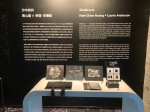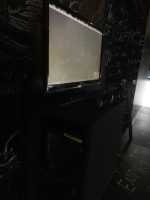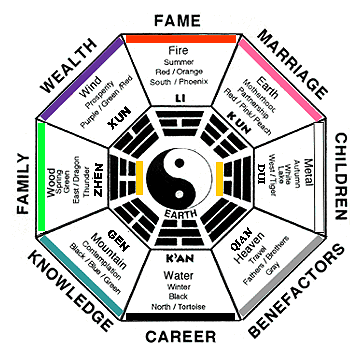



In Julius Horsthusis’s VR work “Emergence VR”. He use multiple geographies and complex structures to create a space which make me felt the style of steampunk and Gothic. This project also gave me some inspirations of how to manage big scene productions. Currently there exist some plugins in Unity that will bring good quality of shaders, Julius’s work better explain how to use those plugins appropriately with visual environment.
This is the first test/ working process of my current project of an environment of the memory. The story talks about my personal memory of “Watching the sunrise”. In fact in this case I was lost my way to a destination because I got a wrong route was generated by google map, but finally I find the right way myself to the right place to watch the sunrise.
https://videos.files.wordpress.com/GvNKVoeG/1_hd.mp4I would like to express those ideas and emotions by designing the VR environment. In the scene, currently I’ve considered to create a space which represent “Memory”. I just think to manage add clear memory and some blurred/ forgotten memories as extra spaces into the illuminative squares as shown in the scene.




China Joy 2019 – VR Update
In the third day of China Joy 2019, the topic went to “DIVE IN TO THE FUTURE”. Vive, IPASION, and XPG has set up the new Integrative design of VR Machine. To compare with current wire-linked HMD, This new type of VR HMD will allow faster calculating by its isolated processor. While experiencing the gaming performance by using that new HMD, I also concerned about how this technology could be worked with future VR real-time rendering.
First of all, I think the low delay of connections should be the most benefactive functions for VR designers and developers. Especially for car designs and interior design, higher processing speed of HMD will help them to get more frames of renderings.
Secondly, integrative HMD can be more mobile to connect with other accessories like trackers, motion capture cameras, recording systems, and feet supports. Which could provide the qualities of making future VR projects.
I hope the future VR HMD will be more convenient wearing with more resolutions.








La Camera Insabbiata / Chalkroom is a project created by HuangHsin-Chien and Laurie Anderson. This virtual reality-based artwork was exhibited in Modern Art Base in Shanghai at August 3rd, 2019. Through the trailer/ introduction showed in the video, I find that the designers have some new thoughts on how to bring multi-sensory and interactions in to one project.
The whole experience takes 8/9 parts of playing to be completely finished. The whole fantastic world illustrate a background of mystery. Inside the whole UI, players can choose 8 different options in order to make them to teleport to those 8 rooms instantly. Each of those 8 rooms represents a unique theme, like sound, dance, touch, vision, and so on. For me, I experienced the room of dance and the room of audiation. I found that the most breakthroughs of those rooms are the control system, and also the sound editing. For example, in the room of sound, player can use the VR controllers as drumsticks for hitting instruments, and each instrument has its unique sound. In the room of dance, the designer designed a exit tunnel at the top of the room, so players can use controllers to make movements for exploring the spaces over the tunnel.
Actually I’m currently work with my personal VR project, I’m especially interested in how the designers of La Camera Insabbiata considered to design the postures and gestures for the controlling system. In La Camera Insabbiata, players need to hold both controllers at the same time, then if they make pushing actions by of their hands, the first-person-view in VR will be moving forward, and the moving speed depends on how fast the players push. For moving backwards, players just need to use button controls, or move their hands back to the original location. It might be cool if such gestures and actions could be programmed among some teleported spaces.
Those reports above are some interesting points I discovered recently.
Zhicheng Yang MADD 2018 – 2019








“Nimiia Cetii” is an artwork created by Jenna Sutela. In this project, the author designed to remix the sounds with multiple effects in how to make the real voice dreamful and atomized.
Also, the video was designed to add components which will move with in a flow that interacted with the rhythm of the beats. I think this point is very helpful for creating future sound designs in a multi-sensory based exhibition environment.
At the beginning of this project, Jingle and I have some ideas about virtual space. Then we Inspired by film Coherence and Japanese animation called Steins Gate , after that we started thinking about the parallel world. Soon in next couple of meetings, we got more reference from the structure of labyrinth, and The Penrose stair. We started to think about What’s the world behind us and what is the possibility of time traveling?
Then, we did some researches of quantum theory and Schrödinger’s Cat. Basically, what the theory tell us is before observing, the cat can be both dead and live. But after observed, it becomes one state. Dead or live.
Uncertainty principle
We cannot even defined the present, how can we predict future.
Quantum Entanglement/Wave Function
As Bonn said, “From our point of view of quantum mechanics, in any single case, there is no quantity that can be used to determinethe result of a collision.’’
Metaphysic


Similar as Quantum theory, Chinese metaphysic based on the book Yi Jing, it also explains the world is influenced by the force field of Yin and Yang. Although Yin force and Yang Force are two powers that they represent two extremes, but they interact and connected with each other.
Technically, there is still difference between metaphysic and quantum theory, but we only use their philosophical perspective to see the world.
And the story is that we make a space of time traveling, and the space is infinity.

















There are couples of weeks left for the immersive adventure project. I’m working with my teammate jingle and now we are improving our story lines and projects. We got some inspirations from the Schrodinger’s Cat, and the Penrose stairs.
From the previous meeting we go a direction of our project in parallel universe. And we want to create one or two immersive spaces which for one person doing different things at the same time. In the theory of Schrodinger’s Cat, the cat could be both dead and alive at the same time if there didn’t exist an “observer”. Thus, things will be funny if we make a VR interaction for 2 people- one is wearing the VR glasses and the other one is controlling the laptop screen. The Penrose stairs is an impossible object created by Lionel Penrose and his son Roger Penrose. It is a two-dimensional depiction of a staircase in which the stairs form four 90-degree turns as they rise or fall, but form a continuous loop. So that people can climb them forever. We consider to use this concept also for some 3D modeling designs, especially for large spaces like buildings.
For the next step, we’ve going to focusing on Unity VR and C4D animations.